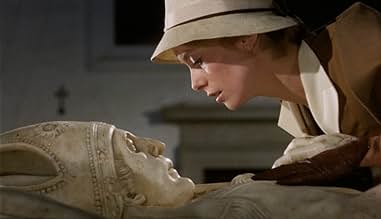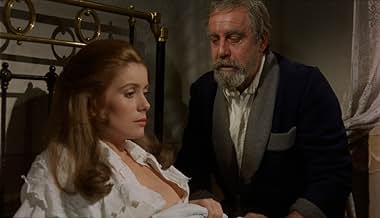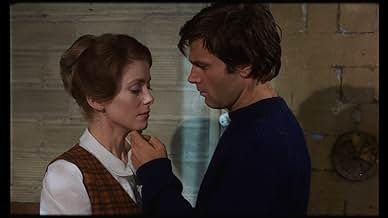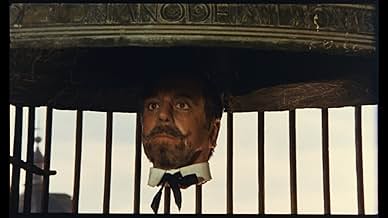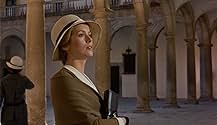Kurz nach dem Tod ihrer Mutter findet eine unschuldige und junge Frau Zuflucht im Haushalt ihres aristokratischen Vormunds mittleren Alters.Kurz nach dem Tod ihrer Mutter findet eine unschuldige und junge Frau Zuflucht im Haushalt ihres aristokratischen Vormunds mittleren Alters.Kurz nach dem Tod ihrer Mutter findet eine unschuldige und junge Frau Zuflucht im Haushalt ihres aristokratischen Vormunds mittleren Alters.
- Regie
- Drehbuch
- Hauptbesetzung
- Für 1 Oscar nominiert
- 11 Gewinne & 4 Nominierungen insgesamt
- Muchacha
- (as María Paz Pondal)
- Don Cándido
- (as Juan José Menéndez)
Empfohlene Bewertungen
Buñuel's attention to detail is extraordinary. Every scene is packed with visual interest. In some strange way, the decor forms an essential part of the structure; it is a facet of Buñuel's unique vision. Moreover, he not only knows exactly when to end a sequence, but how to end it. For instance, when Don Lope (Rey) puts down the dog and walks away, the camera follows not him but the dog: an endearing and brilliant touch, and there are many more. Compelling throughout, even spellbinding.
If this film were a framed picture hanging in a gallery, thousands would come to see it and Buñuel would be acclaimed as a great artist. He was a great artist, in fact, but the cinema is an ephemeral form and people forget. We need to buy the videos and watch these fine movies from time to time, just to remind ourselves that a film can be a significant art form and not merely a commercial product cynically synthesised to extract the largest amount of money from the greatest number of people.
When Tristana meets the painter Horacio (Franco Nero), they fall in love with each other and Tristana flees from Don Lope. However, years later, Horacio brings Tristana back to Don Lope with a terminal disease on her leg. She has a severed leg and survives, and Don Lope asks her hand in marriage. She accepts but now Tristana is a bitter and cynical woman and Don Lope feels the consequence of his acts in the past.
"Tristana" is a morbid tale of lost of innocence by Luis Buñuel. I had seen this film for the last time on 05 Feb 2003 and despite the wonderful performances of Catherine Deneuve and Fernando Rey, it is not among my favorite Buñuel's films. As usual, the director criticizes the Church and the bourgeois class but his famous surrealism is only presented in Tristana's nightmare. My vote is seven.
Title (Brazil): "Tristana"
Not the most surrealistic work, yet, probably one of Buñuel's ten most well-made.
7/10
Wusstest du schon
- WissenswertesLuis Buñuel said that many of Tristana's idiosyncrasies, including her habit of asking people to choose between nearly identical objects, was based on the director's sister's similar habits.
- Zitate
Don Lope: Poor workers. Cheated and then beaten. Work is a curse, Saturno. Down with work that you have to do to survive. That work isn't honorable, as some say. All it does is fatten the exploiting swine. However, what you do for pleasure ennobles man. If only we could all work like that. Look at me, I'd rather be hanged than work! So, I live poorly, but I live without working.
- Alternative VersionenOriginally released in Europe at 105 minutes.
- SoundtracksÉtude No 12 in C minor, Op 10 'Revolutionary'
Written by Frédéric Chopin
Top-Auswahl
- How long is Tristana?Powered by Alexa
Details
- Erscheinungsdatum
- Herkunftsländer
- Offizieller Standort
- Sprache
- Auch bekannt als
- Mảnh Đời Của Tristana
- Drehorte
- Paseo Recaredo, Toledo, Castilla-La Mancha, Spanien(opening and closing scenes with Saturna, Viridiana and the mute boy)
- Produktionsfirmen
- Weitere beteiligte Unternehmen bei IMDbPro anzeigen
Box Office
- Bruttoertrag in den USA und Kanada
- 14.586 $
- Eröffnungswochenende in den USA und in Kanada
- 4.754 $
- 14. Okt. 2012
- Weltweiter Bruttoertrag
- 14.586 $
- Laufzeit1 Stunde 39 Minuten
- Sound-Mix
- Seitenverhältnis
- 1.66 : 1
Zu dieser Seite beitragen



